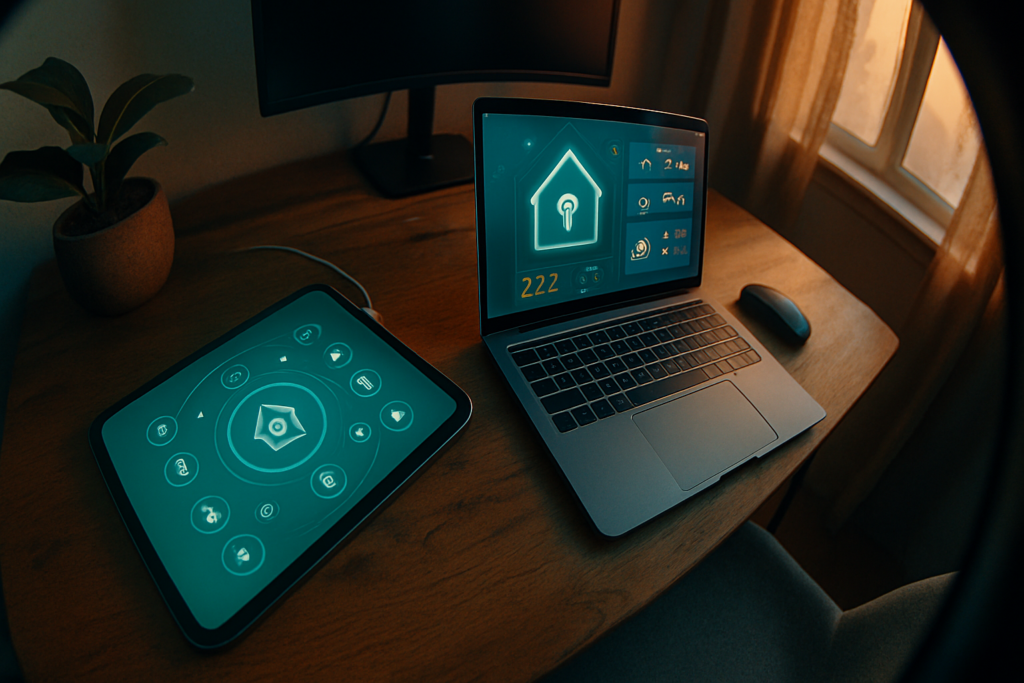In today’s fast-paced digital age, the way we entertain ourselves at home is evolving at a rapid pace. As an avid follower of technological advancements, I’m thrilled to delve into the realm of Smart Media Systems and explore how they are revolutionizing the future of home entertainment.
With the rise of interconnected devices and seamless integration, it’s clear that the traditional living room experience is undergoing a significant transformation. As I navigate through the landscape of Smart Media Systems, I’m excited to share insights on how these innovative technologies are enhancing our viewing experiences and reshaping the way we interact with entertainment content.
From voice-controlled interfaces to personalized recommendations, the possibilities seem endless. Join me on this journey as we uncover the endless potential of Smart Media Systems in shaping the future of home entertainment.
Evolution of Home Entertainment
Reflecting on the evolution of home entertainment in recent years, I’ve witnessed a remarkable shift towards Smart Media Systems. These cutting-edge technologies have revolutionized how we interact with content in our homes, offering unparalleled convenience and customization.
Streaming services have become the cornerstone of modern entertainment, with platforms like Netflix, Hulu, and Disney+ dominating the market. The ability to access a vast library of movies, TV shows, and documentaries at our fingertips has redefined the viewing experience.
Moreover, the integration of artificial intelligence and machine learning algorithms in Smart Media Systems has elevated personalization to new heights. These systems analyze our viewing habits and preferences to deliver tailored recommendations, ensuring that we always have compelling content to enjoy.
Voice control has emerged as another game-changer in home entertainment. With voice-activated assistants like Amazon Alexa and Google Assistant, it’s as simple as uttering a command to adjust the lighting, search for a movie, or queue up a playlist.
This hands-free approach adds a layer of convenience that enhances the overall viewing experience. The convergence of Smart Media Systems with home automation technologies has further blurred the lines between entertainment and convenience.
Imagine dimming the lights, closing the curtains, and starting a movie all with a single voice command or a tap on your smartphone. This seamless integration transforms our living spaces into immersive entertainment hubs.
Looking ahead, the future of home entertainment seems boundless, with advancements in virtual and augmented reality on the horizon. These technologies promise to transport us to interactive worlds and immersive experiences unlike anything we’ve seen before, pushing the boundaries of traditional entertainment.
The evolution of home entertainment through Smart Media Systems represents a paradigm shift in how we consume and engage with content. As these technologies continue to evolve, I’m excited to see how they will continue to reshape our entertainment landscape, offering endless possibilities for innovation and exploration.
Rise of Smart Media Systems
The evolution of home entertainment into Smart Media Systems has been swift and transformative. It’s fascinating to explore how these technologies enhance viewing experiences through features like voice control and personalized recommendations.
Integration of AI Technology
Smart Media Systems are revolutionizing home entertainment through the integration of AI technology. AI algorithms analyze viewing habits to offer personalized content recommendations that cater to individual preferences.
This seamless integration of artificial intelligence enhances the overall viewing experience, making it more engaging and tailored to the viewer’s tastes.
Enhanced User Experience
One of the key benefits of Smart Media Systems is the enhanced user experience they provide. With features like voice control and intuitive interfaces, users can effortlessly navigate through vast libraries of content with ease.
The ability to customize settings, receive personalized recommendations, and interact with entertainment systems using voice commands elevates the overall entertainment experience to new heights.
Advantages of Smart Media Systems
Exploring the advantages of Smart Media Systems reveals the countless benefits they bring to home entertainment. These systems redefine how we interact with media, offering a range of conveniences and enhancements that elevate the viewing experience.
- Convenience: Smart Media Systems streamline entertainment consumption by centralizing access to various content sources. With a single interface, users can switch between streaming services, cable television, gaming consoles, and more without needing multiple remotes or devices.
- Personalization: Tailored recommendations based on viewing habits ensure that users are presented with content they are likely to enjoy. By leveraging AI algorithms, Smart Media Systems curate a personalized viewing experience, saving time and enhancing satisfaction.
- Interactivity: Enhanced user engagement is a key advantage of Smart Media Systems. Features like voice control and intuitive interfaces empower users to interact with their entertainment in novel ways, creating a more immersive experience.
- Efficiency: The integration of automation and smart technologies optimizes the viewing process. From setting reminders for favorite shows to adjusting lighting and temperature for optimal viewing conditions, Smart Media Systems enhance efficiency and comfort.
- Versatility: Smart Media Systems are adaptable to a variety of preferences and setups. Whether you prefer movie marathons, gaming sessions, or live sports, these systems can cater to diverse entertainment needs, offering flexibility and versatility.
In essence, the advantages of Smart Media Systems lie in their ability to simplify, personalize, and elevate the home entertainment experience. By harnessing technology to enhance convenience, interactivity, and efficiency, these systems are at the forefront of redefining how we engage with media in the digital age.
Challenges and Limitations
Exploring the realm of Smart Media Systems unveils not only their transformative potential but also the challenges and limitations that accompany their integration into the home entertainment landscape. As technology advances, several key obstacles must be addressed to ensure the seamless adoption and optimal functionality of these cutting-edge systems.
- Complexity of Setup: Setting up Smart Media Systems may pose a challenge for some users, especially those less familiar with technology. The initial configuration process, involving network connections, device pairing, and software installations, can be daunting for individuals lacking technical expertise, potentially hindering widespread adoption.
- Compatibility Issues: Interoperability between different devices and platforms remains a significant hurdle in the realm of Smart Media Systems. Ensuring seamless communication and integration among various components, such as streaming devices, smart TVs, and voice assistants, requires standardization and compatibility protocols to prevent connectivity issues that may disrupt the user experience.
- Data Privacy Concerns: The collection and utilization of user data by Smart Media Systems raise critical privacy concerns. As these systems gather information about viewing preferences, habits, and interactions to personalize recommendations, ensuring robust data security measures and transparent data handling practices is paramount to protect user privacy and prevent unauthorized access or data breaches.
- Maintenance and Upkeep: Regular maintenance and updates are essential to keep Smart Media Systems operating efficiently. Software updates, firmware upgrades, and system optimizations are necessary tasks to address vulnerabilities, enhance performance, and incorporate new features. Neglecting maintenance routines may lead to system malfunctions or security risks.
- Cost of Implementation: The initial investment required to acquire and set up Smart Media Systems can be a deterrent for some users. From purchasing compatible devices to subscribing to streaming services and investing in smart home infrastructure, the cost of implementing a comprehensive system tailored to individual preferences can be considerable, limiting accessibility for budget-conscious consumers.
Navigating these challenges and addressing the limitations of Smart Media Systems is crucial to realizing their full potential in revolutionizing home entertainment. By overcoming technical barriers, ensuring data security and privacy, and optimizing user experience, these systems can offer unparalleled benefits and redefine the way we engage with media in the digital age.
Future Trends in Home Entertainment
Exploring the trajectory of home entertainment unveils fascinating trends that are reshaping how we engage with media. Smart Media Systems are set to lead the charge in revolutionizing the future of home entertainment.
As AI technology continues to evolve, the integration of artificial intelligence and machine learning algorithms in Smart Media Systems will further enhance the viewing experience by offering hyper-personalized content recommendations based on individual preferences and viewing habits. In the realm of home entertainment, we are witnessing a shift towards innovative features that prioritize user engagement and convenience.
Voice control technologies, exemplified by virtual assistants like Amazon Alexa and Google Assistant, will play an increasingly pivotal role in simplifying interactions and navigation within Smart Media Systems. The seamless integration of these voice-activated commands will empower users to effortlessly browse through content, adjust settings, and even control other smart devices in their entertainment setup.
Moreover, the future of home entertainment is marked by a convergence of technology that extends beyond traditional viewing experiences. Augmented reality (AR) and virtual reality (VR) are poised to redefine how we perceive and interact with content, offering immersive and interactive environments within the confines of our living rooms.
By amalgamating Smart Media Systems with AR and VR capabilities, users can expect a transformation in how they consume media, blurring the lines between the physical and digital worlds. Looking forward, the evolution of Smart Media Systems is anticipated to address existing challenges and limitations, paving the way for a more streamlined and user-centric entertainment landscape.
Innovations in setup processes, enhanced device compatibility, robust data privacy measures, simplified maintenance requirements, and cost-effective implementations are key focus areas for industry advancements. Overcoming these obstacles will be instrumental in ensuring widespread adoption and maximizing the potential of Smart Media Systems to deliver unparalleled home entertainment experiences.
The future holds a myriad of possibilities for home entertainment, where Smart Media Systems stand at the forefront of innovation, offering a glimpse into a world where technology seamlessly integrates with our daily lives, transforming how we relax, unwind, and immerse ourselves in captivating media experiences.





